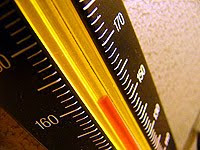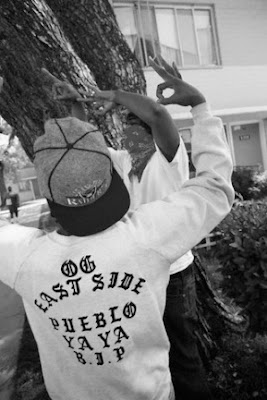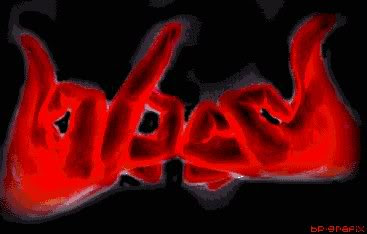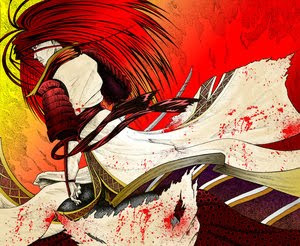
High blood pressure or hypertension is a medical condition in which there was an increase in blood pressure are chronic (long term). Patients who have at least three blood pressure readings exceeding 140/90 mmHg at rest is estimated to have high blood condition. Blood pressure is always high is one risk factor for stroke, heart attack, heart failure and arterial aneurysm, and is a major cause of chronic heart failure.
Blood pressure
On examination the
blood pressure will get two numbers. Higher rates obtained when the heart contracts (systolic), lower figure obtained when the heart relaxes (diastolic). Blood pressure less than 120/80 mmHg is defined as "normal." In high blood pressure, usually there is an increase systolic and diastolic pressure. Hypertension usually occurs in the blood pressure of 140/90 mmHg or above, measured in both arms three times within a few weeks.
Classification
Blood Pressure Classification by JNC VII In Adults [1] Blood Pressure Category Systolic Diastolic Blood Pressure
Normal <120> = 160 mmHg (or)> = 100 mmHg
In isolated systolic hypertension, systolic pressure to 140 mmHg or more, but diastolic pressure of less than 90 mmHg and diastolic pressure was still within the normal range. Hypertension is often found in the elderly.
Along with age, almost everyone has increased blood pressure, systolic pressure continued to increase until the age of 80 years and diastolic pressures continue to increase until age 55-60 years, then decrease slowly or even decreased.
In patients with diabetes mellitus or renal disease, studies have shown that blood pressure above 130/80 mmHg should be considered a risk factor and should be given treatment.
Setting blood pressure
Increased blood pressure in the arteries can occur in several ways:
* The heart pumps more powerful that drain more fluid in every second
* Large arteries lose elasticity and become rigid, so that they can not inflate when the heart pumps blood through the arteries. Therefore the blood in each heart beat are forced to pass through narrow vessels than usual and cause a rise in pressure. This is what happens in the elderly, where the wall has been thickened and stiff arteries due to arteriosclerosis. In the same way, blood pressure also increased in the event of "vasoconstriction", that is if the small arteries (arterioles) to temporarily shrink due to stimulation of nerves or hormones in the blood.
* Increased fluid in the circulation can cause increased blood pressure. This happens if there are abnormalities of renal function and is unable to dispose of salt and water from the body. The volume of blood in the body increases, so the blood pressure also increases.
Conversely, if:
* Reduced heart pumping activity
* Arterial experiencing widening
* A lot of fluid out of circulation
Then the blood pressure will decrease or become smaller.
Adjustments to these factors are implemented by changes in renal function and autonomic nervous system (part of the nervous system that regulates many body functions automatically).
Changes in kidney function
The kidneys control blood pressure in several ways:
* If blood pressure rises, the kidneys will increase spending on salt and water, which will cause a reduction in blood volume and restore blood pressure to normal.
* If blood pressure drops, the kidney will reduce the discharge of salt and water, thus increasing blood volume and blood pressure returned to normal.
* The kidneys can also increase blood pressure by producing an enzyme called renin, which triggers the formation of the hormone angiotensin, which in turn will trigger the release of the hormone aldosterone.
Kidney is an important organ in controlling blood pressure, and therefore a variety of diseases and disorders can lead to kidney pda high blood pressure.
For example, narrowing of the arteries that leads to one of the kidneys (renal artery stenosis) can cause hypertension.
Inflammation and injury to one or both kidneys can also cause a rise in blood pressure.
The autonomic nervous system
Sympathetic nervous system is part of the autonomic nervous system, which will temporarily:
* Increased blood pressure responses during the fight-or-flight response (the body's physical reaction to external threats)
* Increased heart rate, speed and strength; too narrow majority of the arterioles, but the widening of the arterioles in certain areas (eg, skeletal muscle, which require more blood supply)
* Reduce the discharge of water and salt by the kidneys, thereby increasing the volume of blood in the body
* Release the hormone epinephrine (adrenaline) and norepinephrine (noradrenaline), which stimulates the heart and blood vessels.
Symptoms
In most patients, hypertension causes no symptoms, even if by accident some of the symptoms occur simultaneously and reliably associated with high blood pressure (when in fact not). Symptoms in question are headache, bleeding from the nose, dizziness, facial redness and fatigue, which could have occurred either in patients with hypertension, as well as to a person with normal blood pressure.
If hypertension is severe or chronic and untreated, can develop the following symptoms:
* Headache
* Fatigue
* Nausea
* Vomiting
* Shortness of breath
* Restlessness
* Blurred vision that occurs because of damage to the brain, eyes, heart and kidney.
Sometimes patients with severe hypertension has decreased consciousness and even coma because of brain swelling. This is called hypertensive encephalopathy, which require immediate treatment.
Causes of hypertension
Hypertension based on the cause divided into 2 types:
1. Primary or essential hypertension is hypertension that is not known the cause (located at approximately 90% of all hypertension).
2. Secondary hypertension is hypertension caused by / as a result of other diseases.
Primary hypertension is likely to have many causes, some changes on the heart and blood vessels together probably cause increased blood pressure.
If the cause is unknown, it is called secondary hypertension. In about 5-10% of patients with hypertension, the cause is kidney disease. In about 1-2%, the cause is a hormonal disorder or the use of certain drugs (such as birth control pills).
Another rare cause of hypertension is Phaeochromocytoma, namely tumor on the adrenal gland that produces hormones epinephrine (adrenaline) or norepinephrine (noradrenaline).
Overweight (obesity), an inactive lifestyle (exercise lazy), stress, alcohol or salt in food, can trigger the occurrence of hypertension in those who have a reduced sensitivity. Stress tends to cause increased blood pressure for a while, if the stress has passed, then the blood pressure usually returns to normal.
Some causes of secondary hypertension:
1. Kidney Disease
* Renal artery stenosis
* Pyelonephritis
* Glomerulonephritis
* Kidney tumors
* Polikista kidney disease (usually inherited)
* Trauma to the kidney (injury of the kidneys)
* Radiation therapy of the kidney
2. Hormonal Disorders
* Hiperaldosteronisme
* Cushing's syndrome
* Phaeochromocytoma
3. Drugs
* Birth control pills
* Corticosteroids
* Cyclosporine
* Erythropoietin
* Cocaine
* Alcohol abuse
* Cinnamon (in a very large amount)
4. Other Causes
* Koartasio aorta
* Preeclampsia in pregnancy
* Acute intermittent porphyria
* Acute lead poisoning.





















